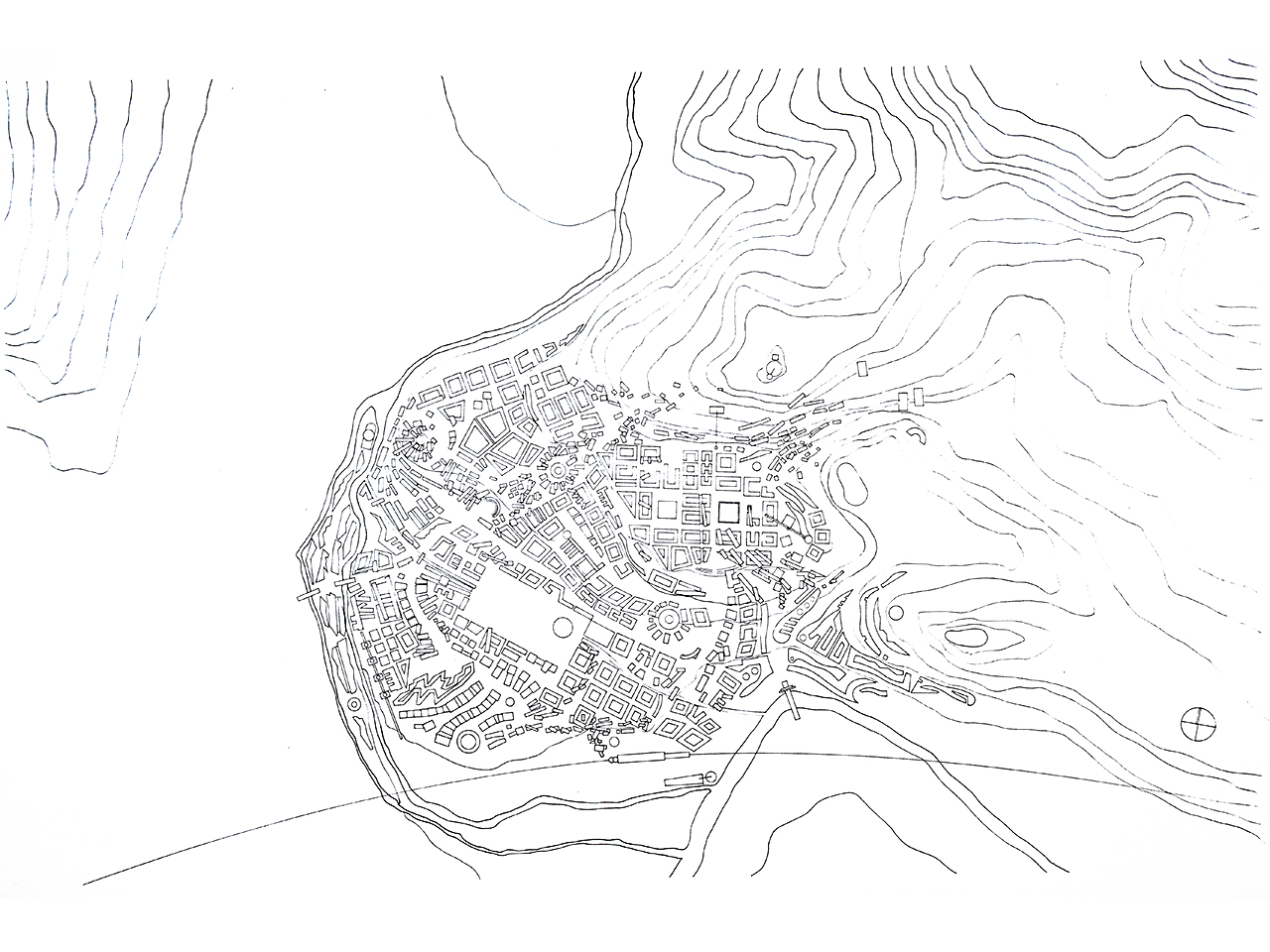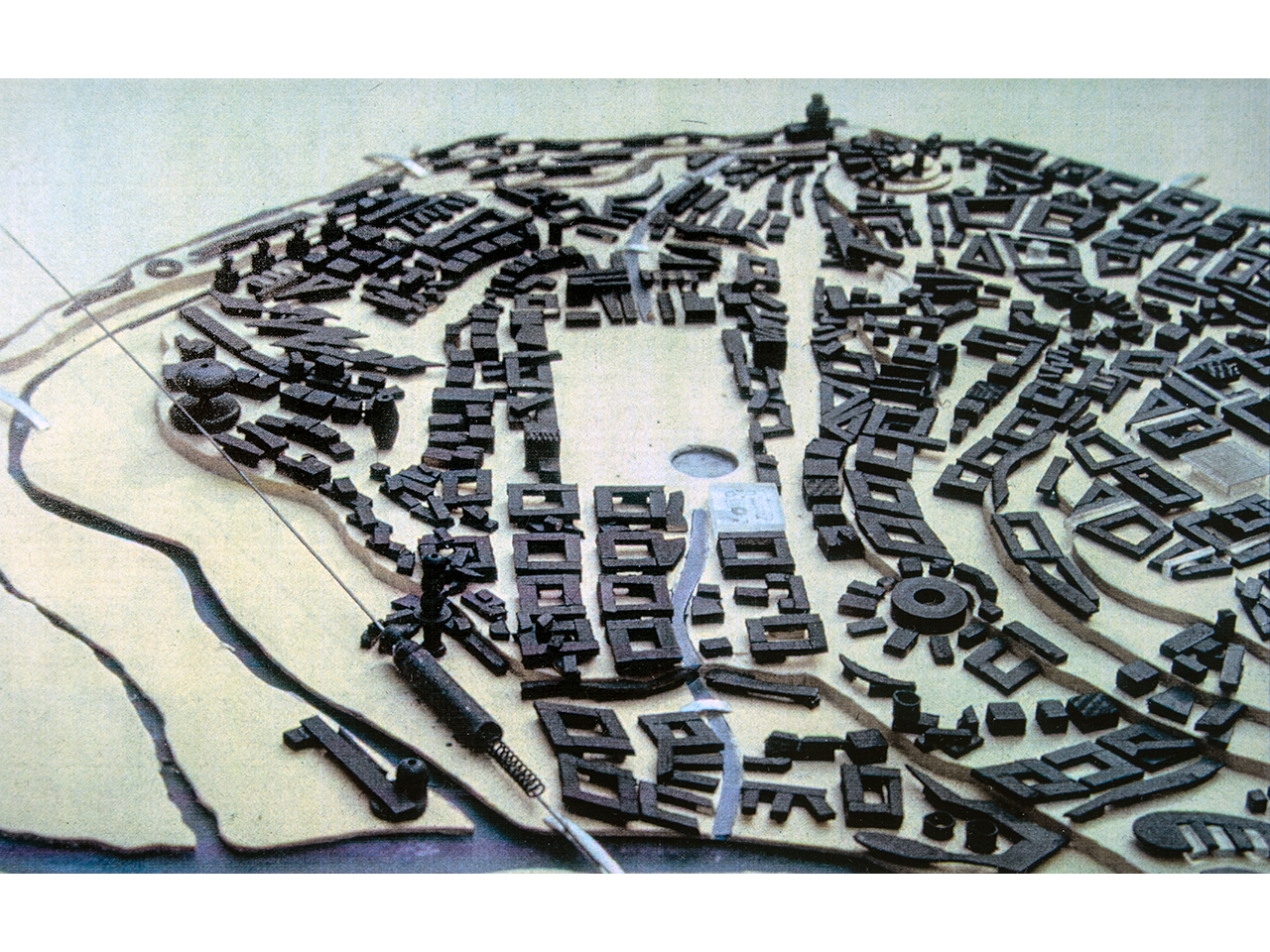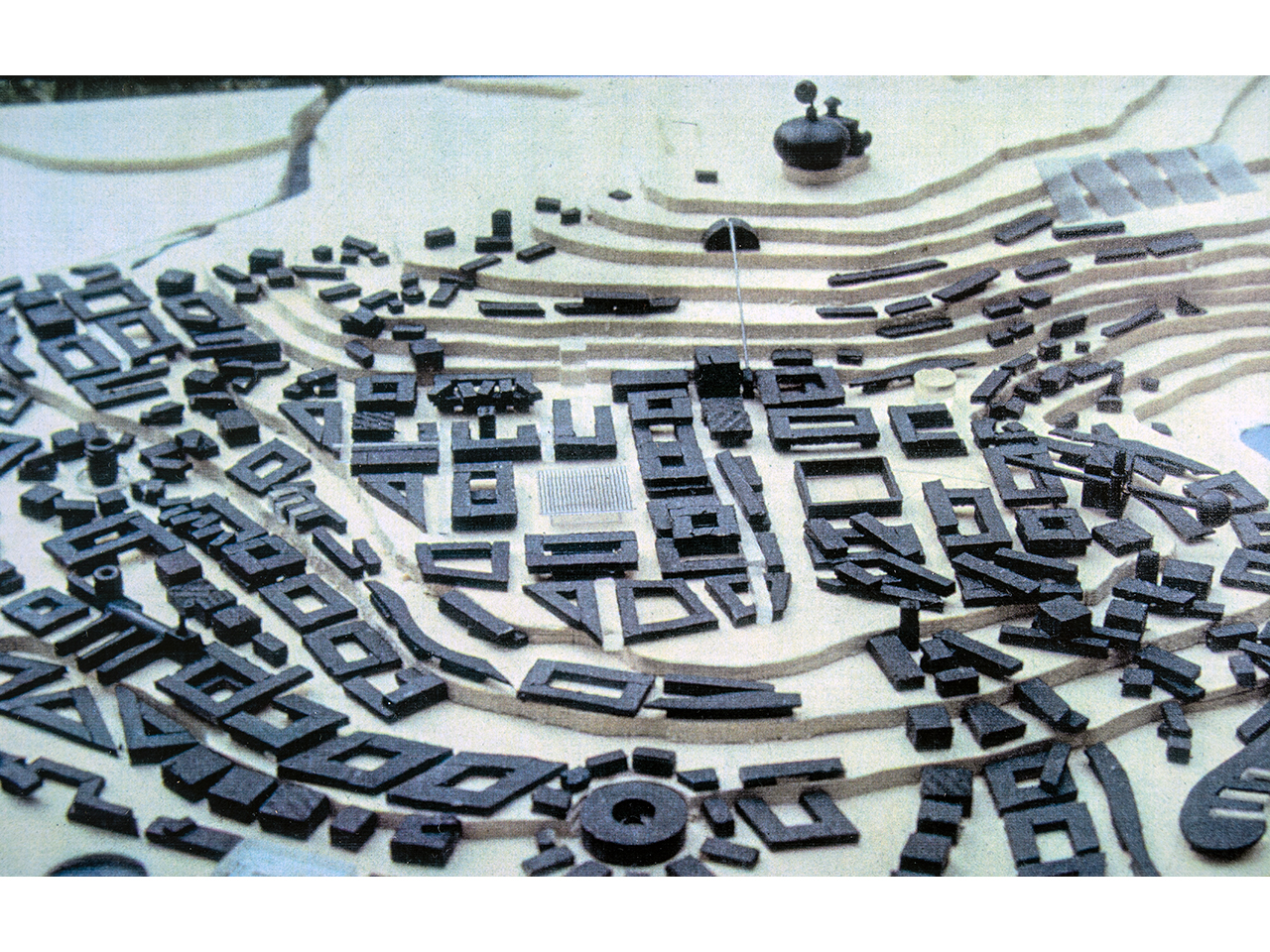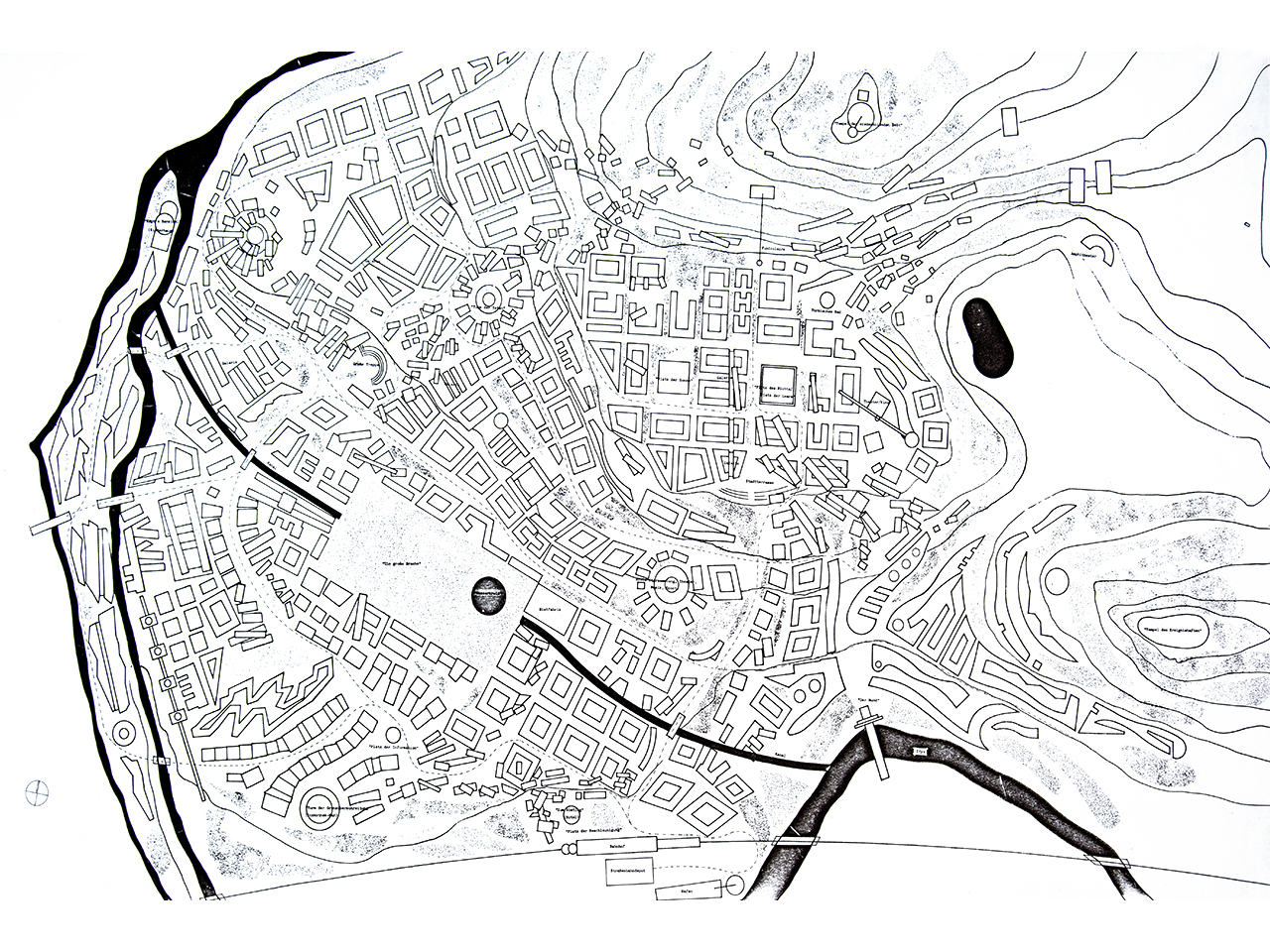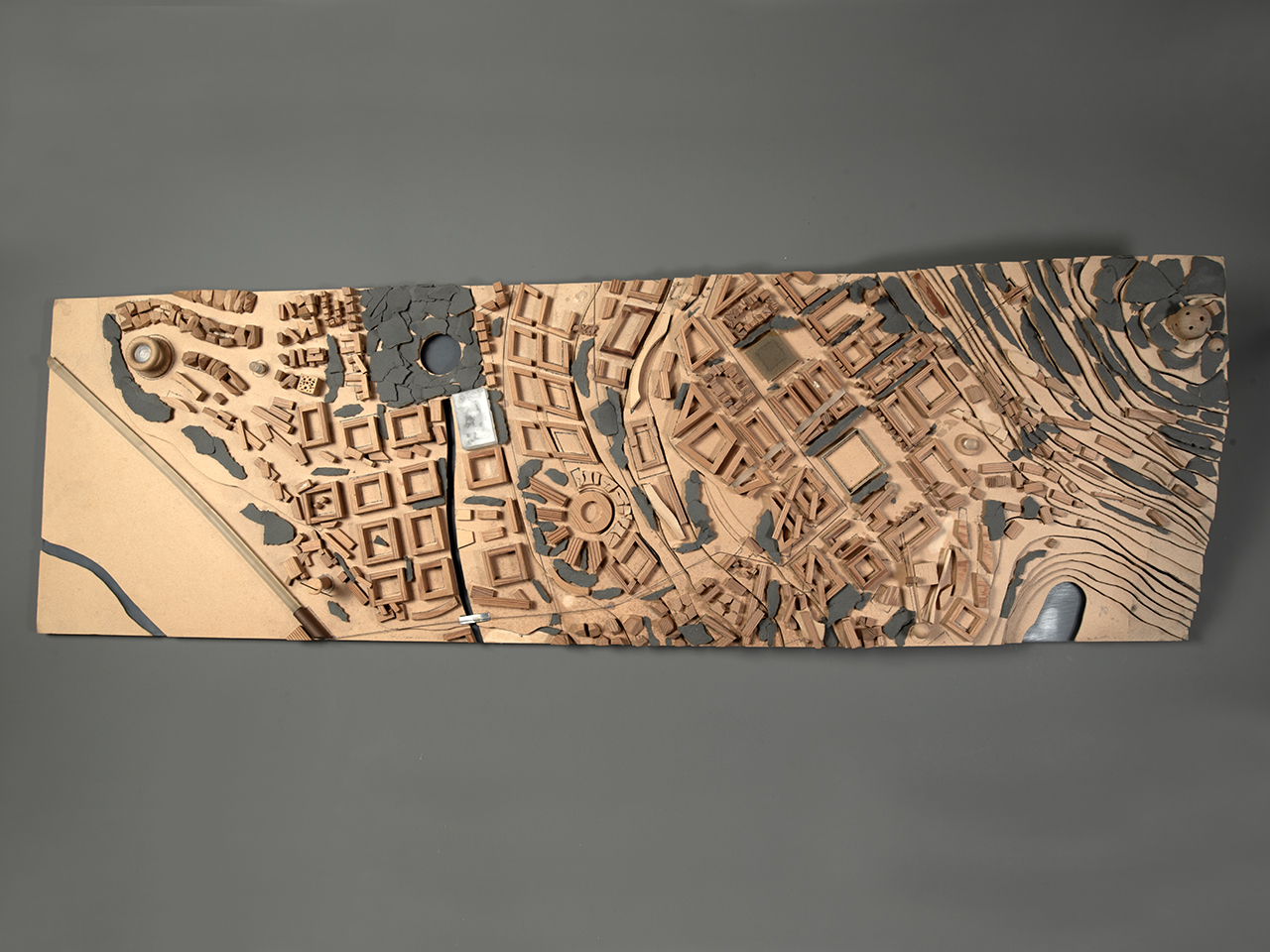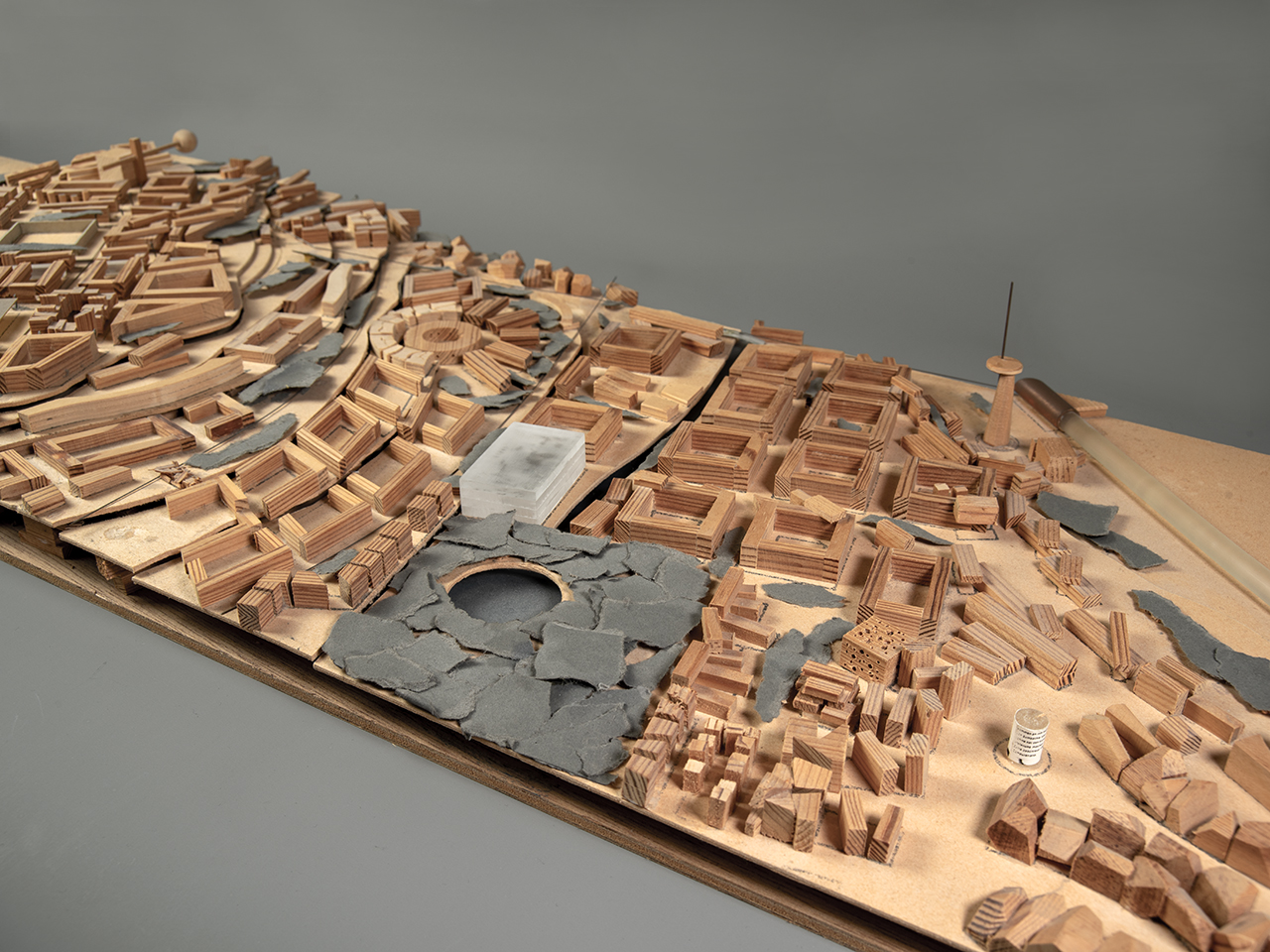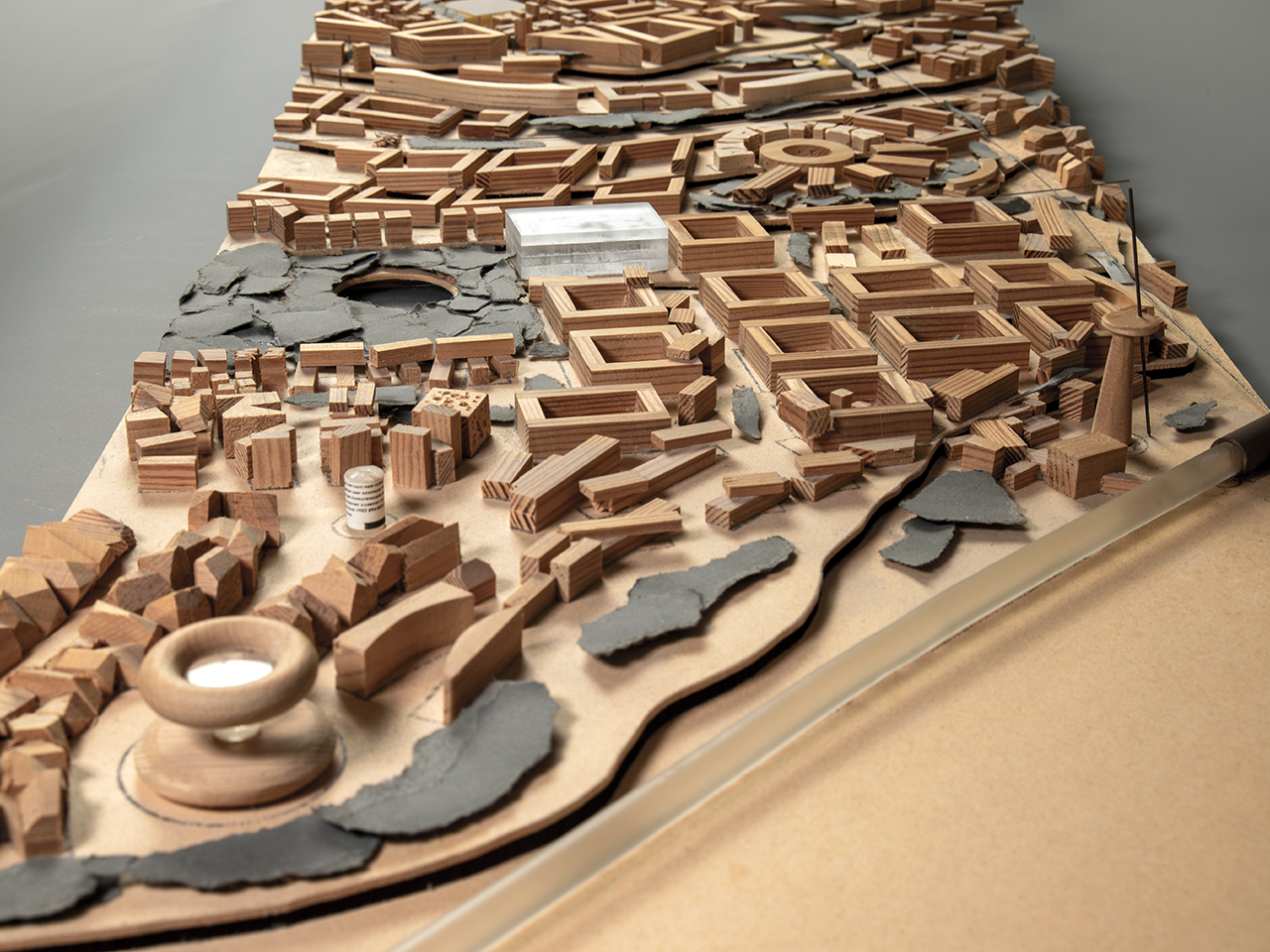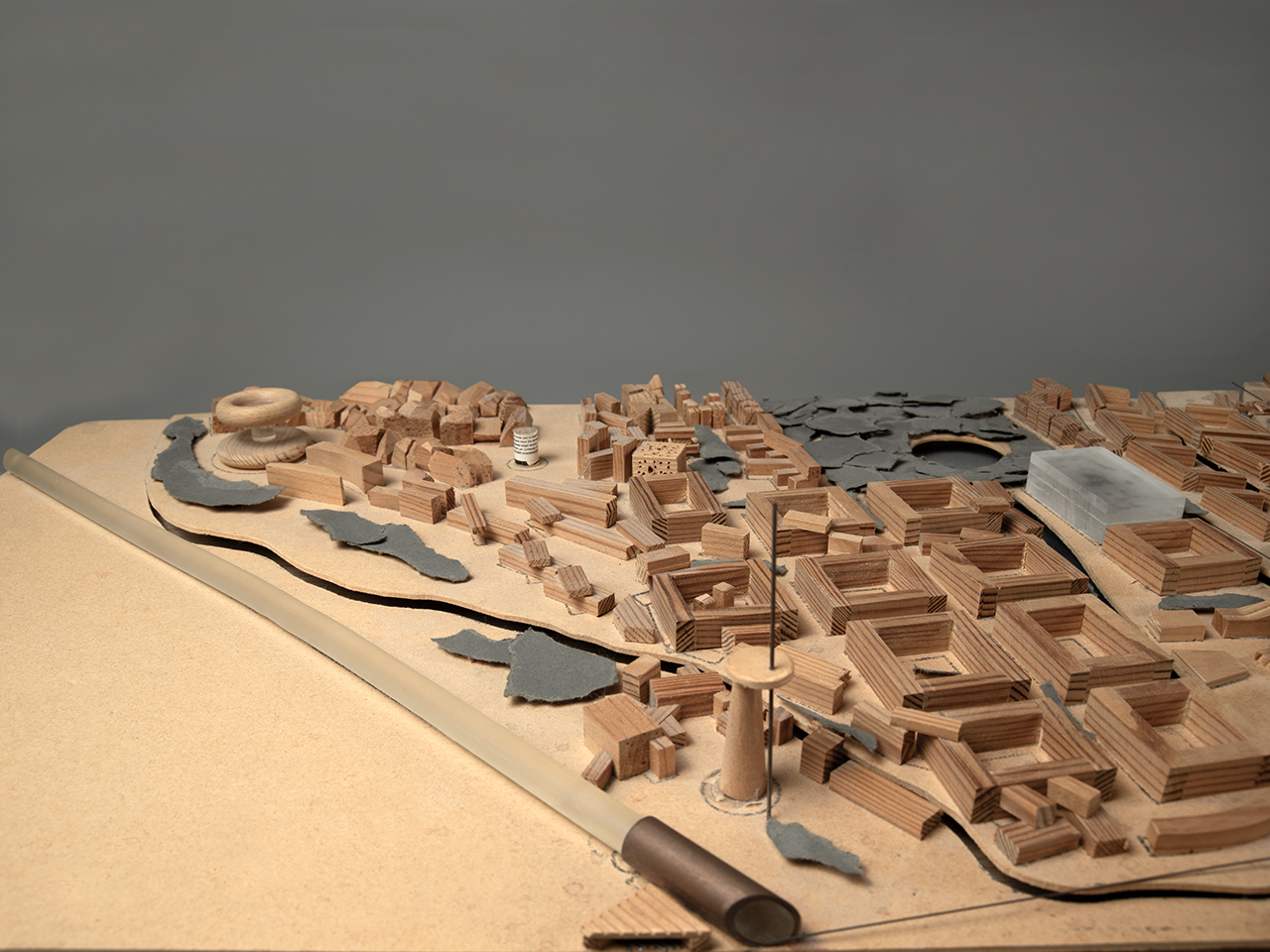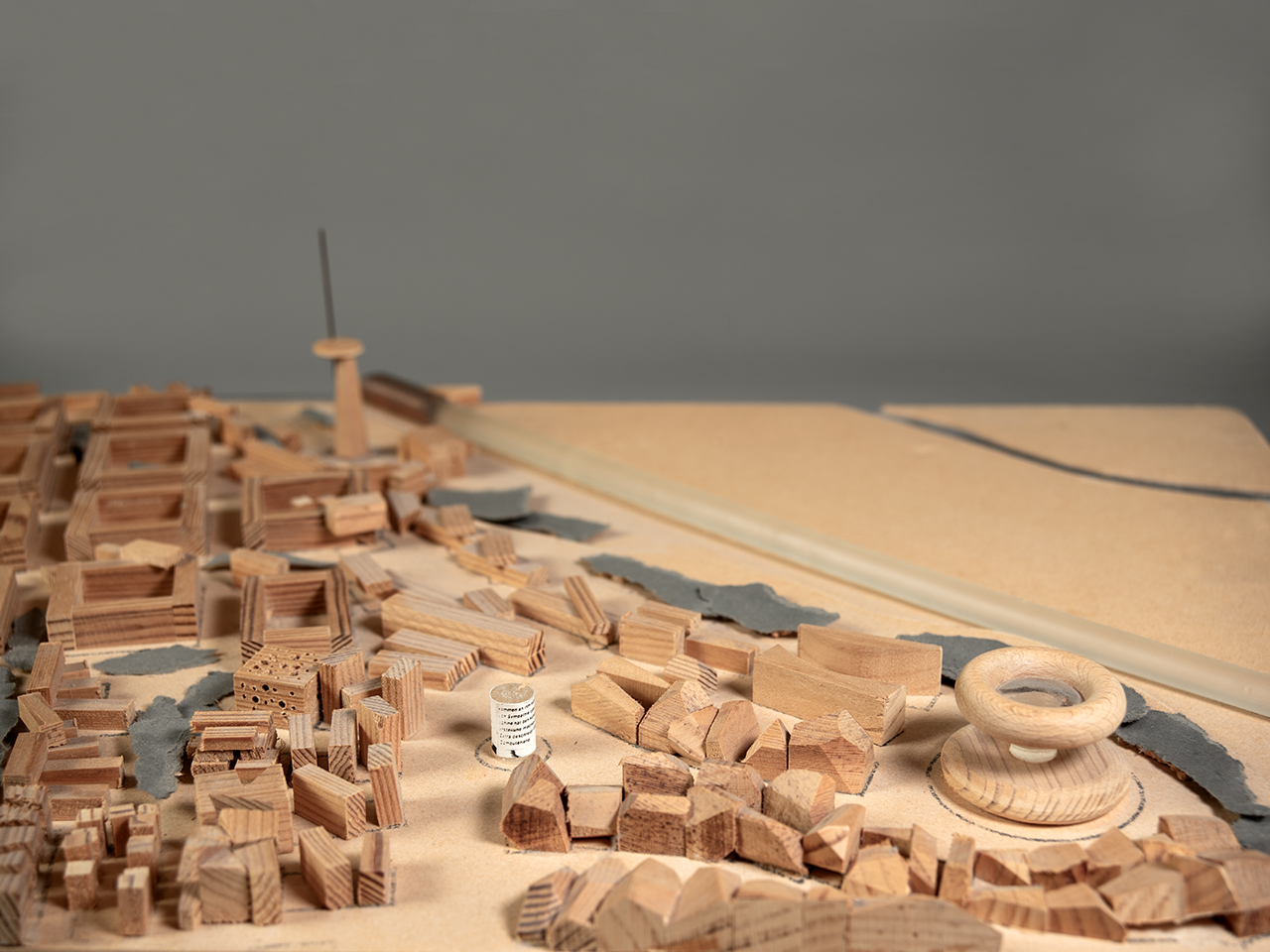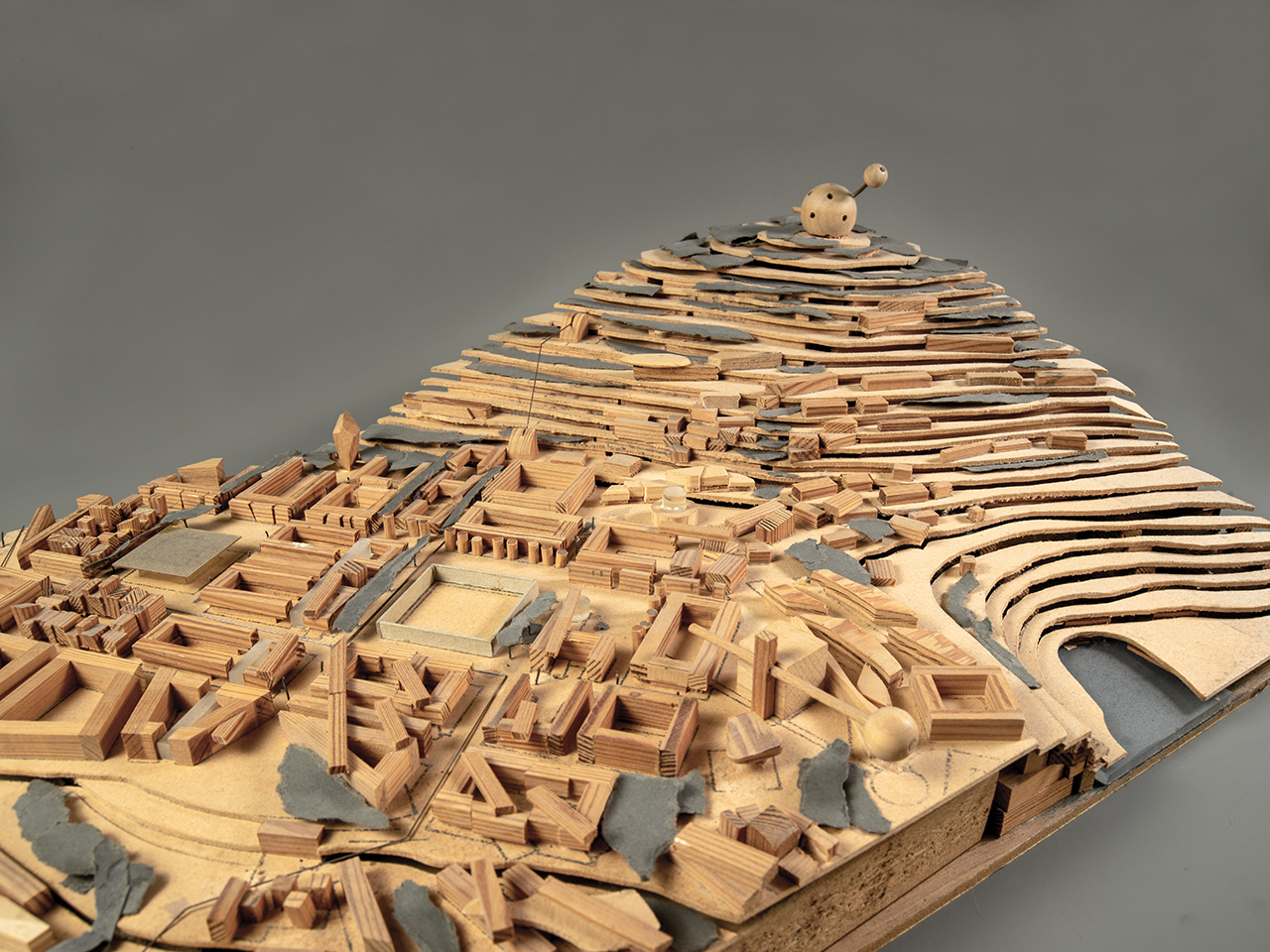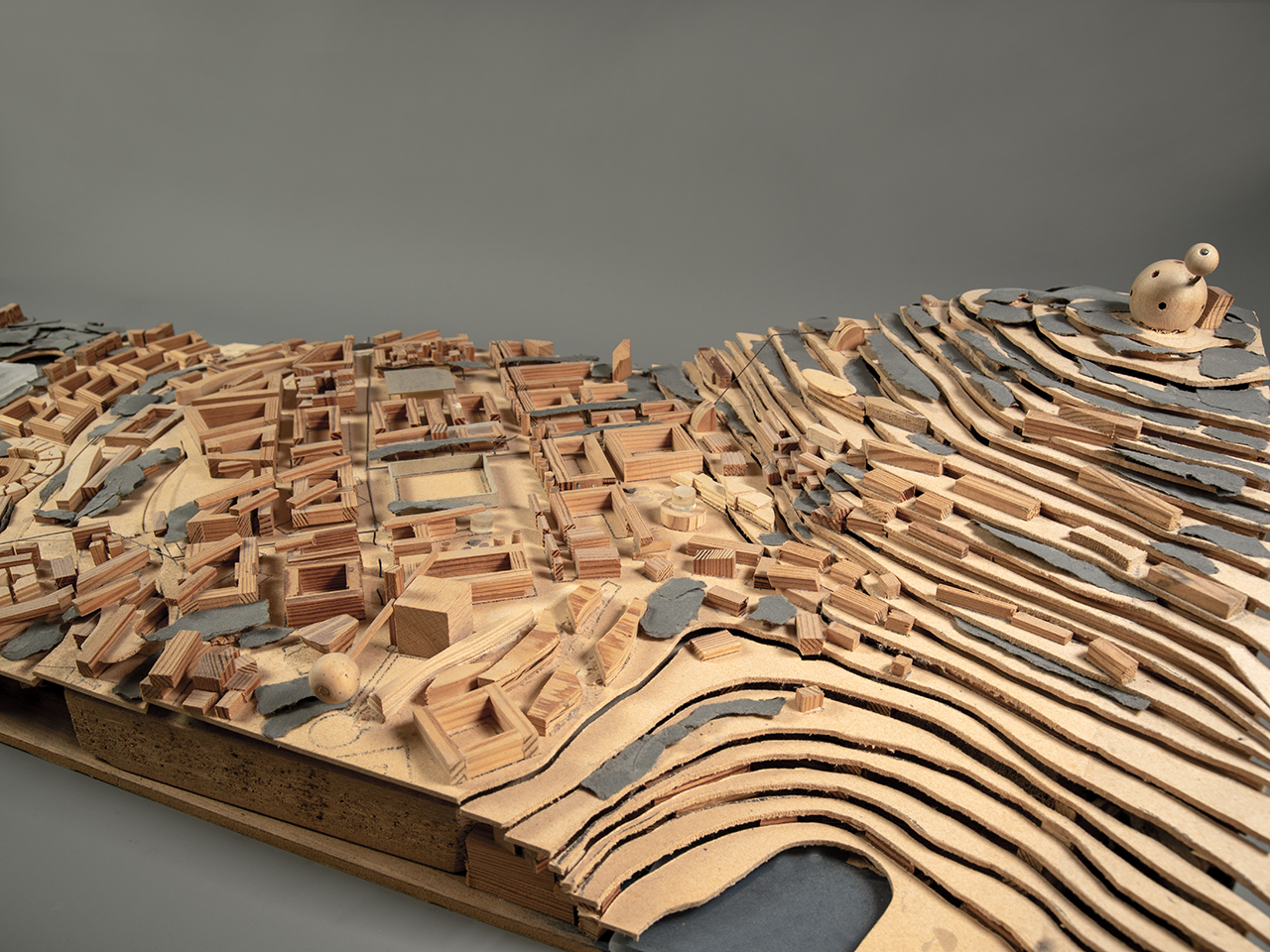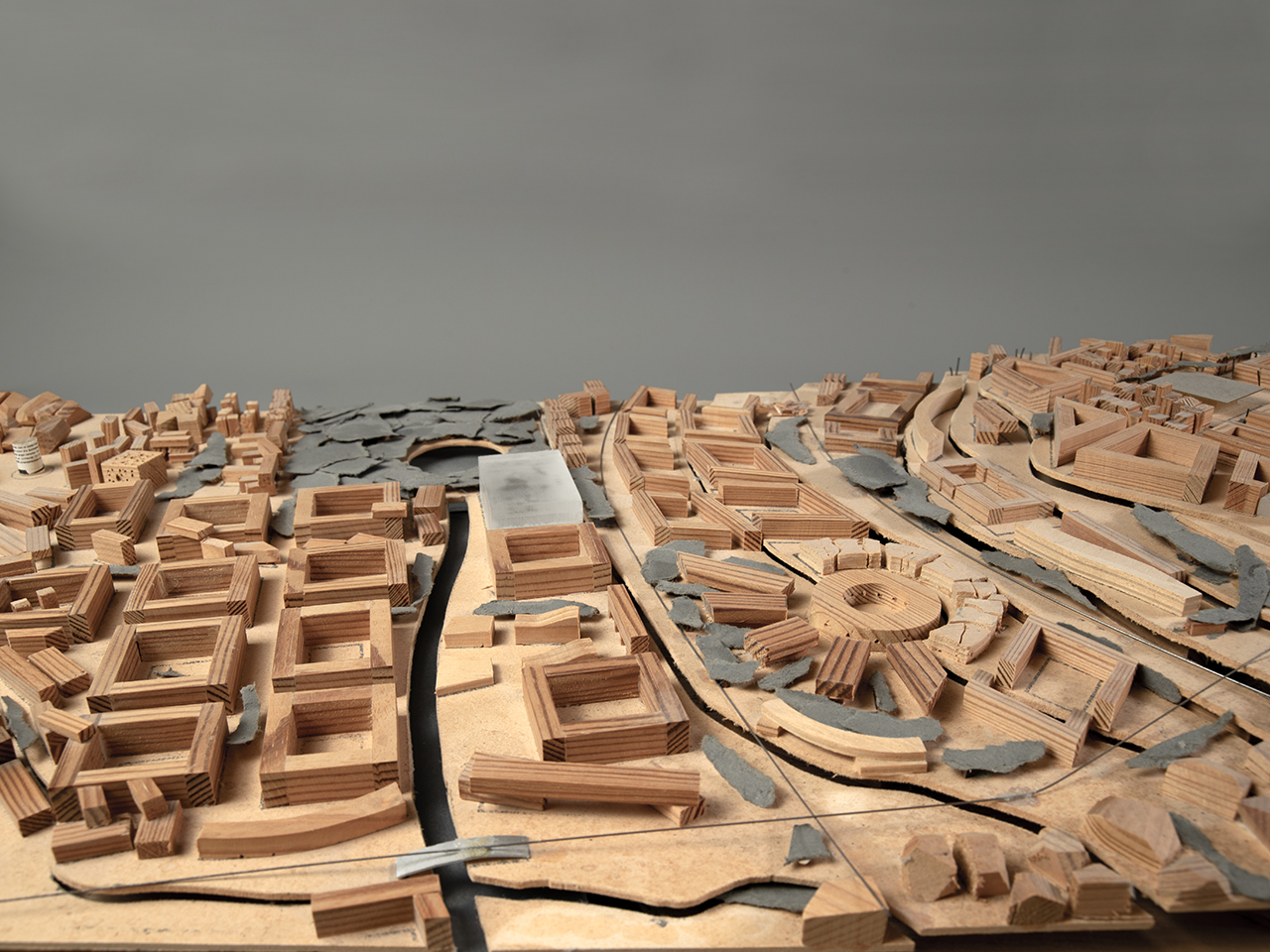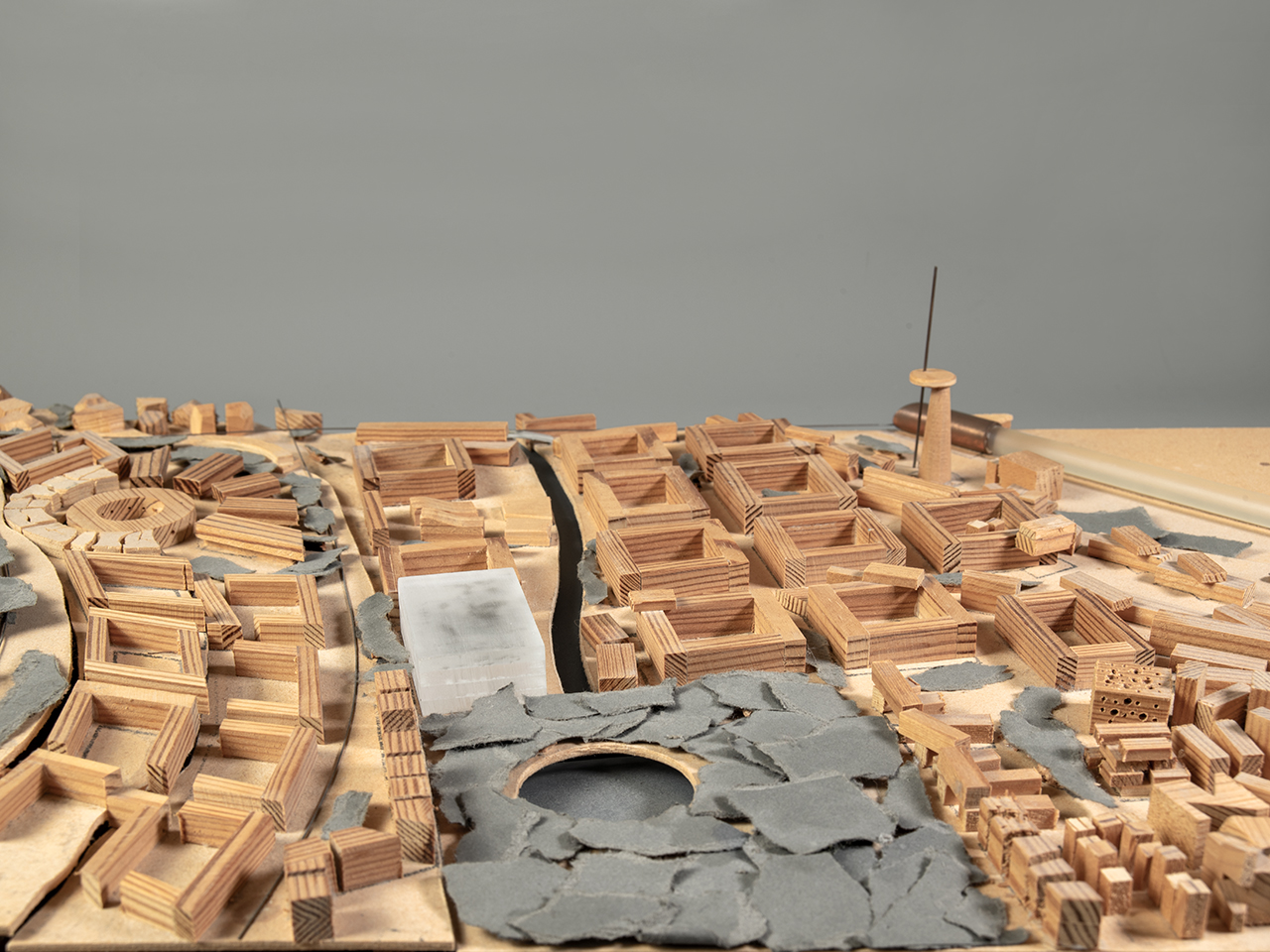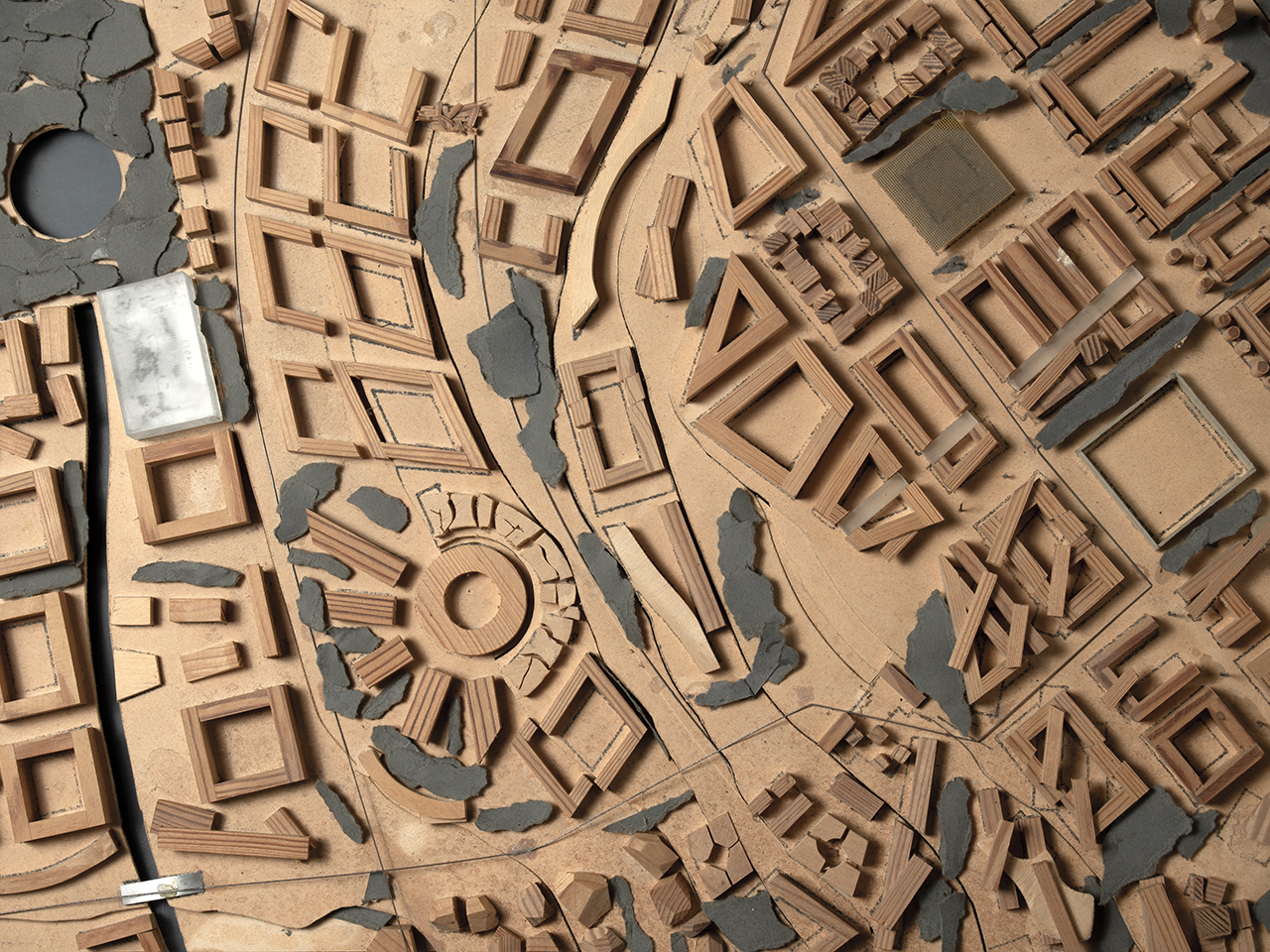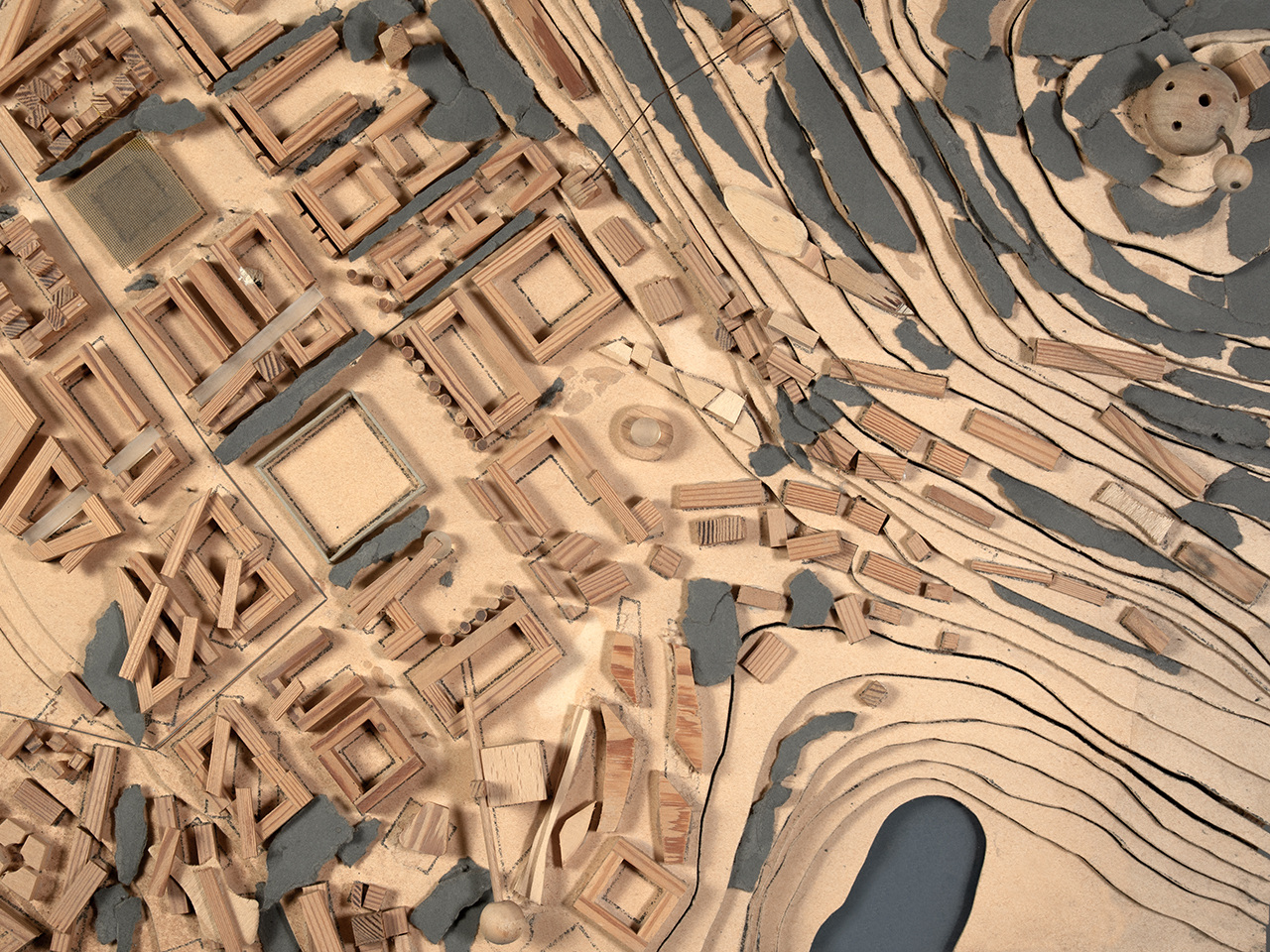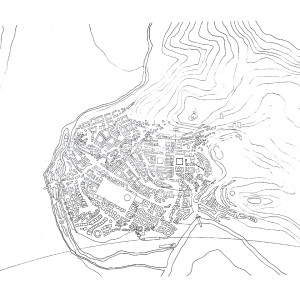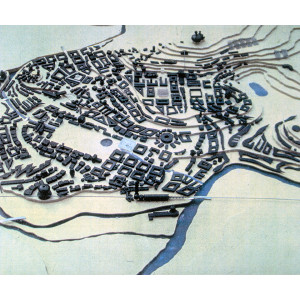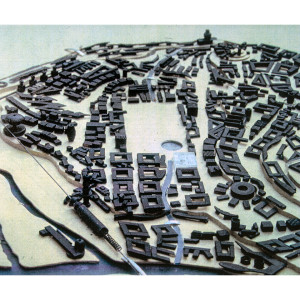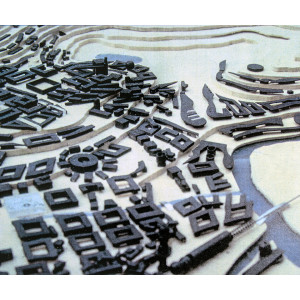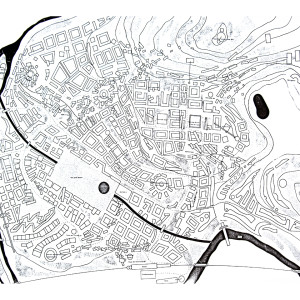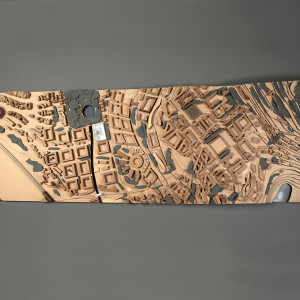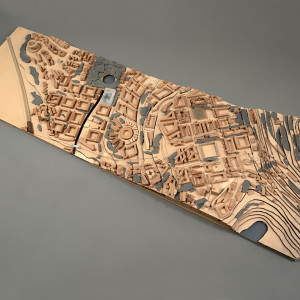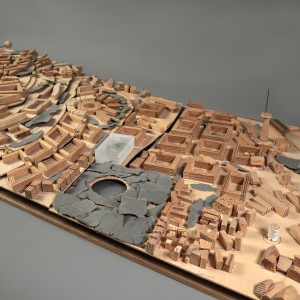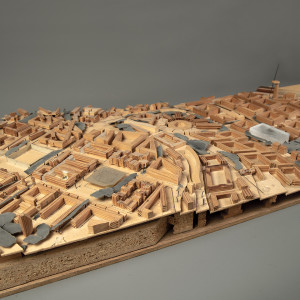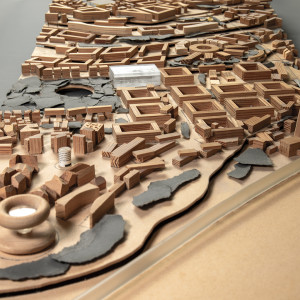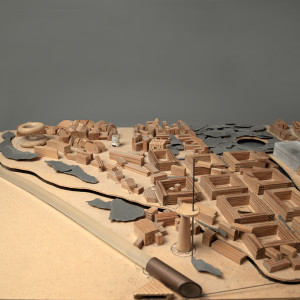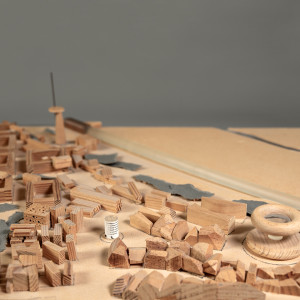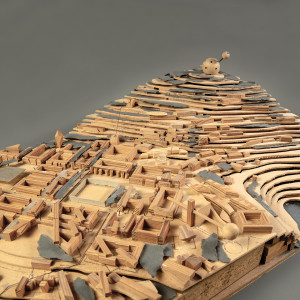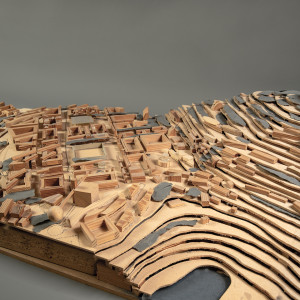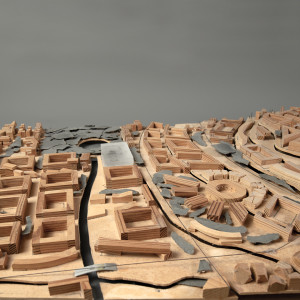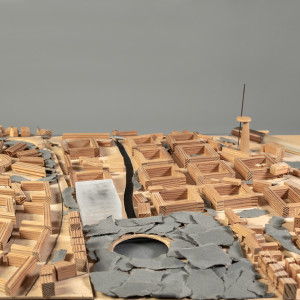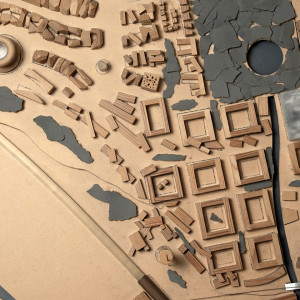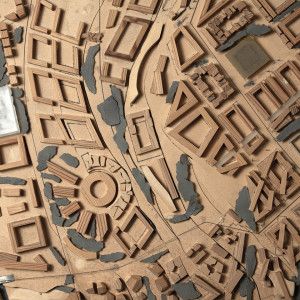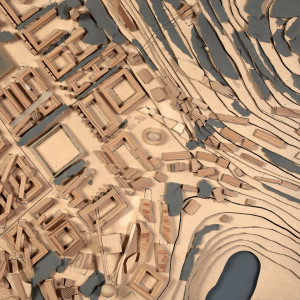urban development project “new living and working“, with florian krieger, max pasztory, julia schößler
There is no longer any ideological-philosophical frame of reference for urban planning. No scientific-ideological paradigm whose uniform order could be made clear in the mirror of the cityscape. The one observer has departed, the mirror is broken, modernity has lost its way in chaos along with its belief in the feasibility of the world and the self-confident, autonomous subjectivity of its actors. What does it look like, the city in the world without certainties, authoritarian monotheistic truths, the city in the society of subjects without subjectivity, equipped only with the lack of the other and the relics of a past oriented towards the future? Richard Sennet proposes to seek meaning in complexity, to regard difference as wealth, to gain identity in relation to the other and no longer to seek it in flight to God or the gods of modernity (market, power, mobility, science). A new city must give space to this difference.
Genesis from hopelessness
The cities of modern industrial society are at the end of their rope. Social segregation, misery in consumer affluence, traffic that has come to a standstill, rampant crime, ecological collapse, a corrupted public sphere and the total inability of the municipality to act. The city has lost first its quality of life as a place of community and then its viability. But in the midst of its decay, resistance is forming. Islands of counterculture are emerging – hotbeds of the idea of a new city. Diverse groups join forces and discuss the possibility of a new concept of the city, based on the experience of acute urban disaster, but retaining the original qualities that cities displayed in their historical development. They decide to leave the old city and found the new one. The different, partly opposing philosophies of life, orientations and desires should be readable in the structure of the city – its planning should emerge from the discourse of these differences. A planning group is put together from members of this spontaneous founding community – united by nothing more than the will for a new city – who develop their structural concept in discussion with the future users. The difference of the planners reflects the difference of the users – a heterogeneous city structure emerges.
The city of difference
The city cannot and should not cover social contradictions and social conflicts with a formal, supposedly functional, spatial order (grid), not plan homogeneity where heterogeneity and thus unpredictability are ineradicable. It can only offer space in which the plurality and contradictoriness of views, values and ways of life meet; a) in the form of architecturally and urbanistically different forms of development, b) as discourse in public space. In this field of tension of communication/interaction between individuals and groups, consensus and dissent, identity and difference are formed – community emerges. It requires the continuous, place-related, preferably direct exchange of its members in order to define or constantly redefine its structural foundations (norms, values, law, relationship between the general and the particular, individuals and community). This process can be described as the social or urban production of meaning, which in an ideal society or city involves all members and thereby confronts them in political discourse with the situation of the generality of the urban collective and thus relates the individual to the collective (classical models: agora, forum, stoa, … , coffee house, market, square, … ).
The autonomous city
The prerequisite for real interaction is the manageability and relative independence of the collective (30,000 inhabitants, political autonomy, city state?). Political decisions must a) be the result of a discourse involving as many inhabitants as possible and be communicated/delegated as little as possible and b) be enforceable vis-à-vis the outside world or be able to be made independently of societal or global constraints. Only when the questions of place (from technical organisational problems to ethical-philosophical questions: ”How do we want to live?”) result in concrete practice instead of becoming bogged down in mediating and administrative instances, is there a dimension of the political in the sense of the polis as a self-referential system:
- free exchange of opinions
- fundamental discourse on values to determine the communal framework in which individual action takes place.
This is followed by the pragmatic dimension of politics in the form of concrete decisions.
City as lifeworld
Only if the individual experiences the development of his place of residence (his lifeworld) as something he can influence, if he recognises himself in the political processes, is it possible for the individual to identify with the general public, and the potentially opposing spheres of interest reveal points of intersection: The city dweller feels responsible for his city. He recognises the dependence of his individual happiness on the state of the whole, understands his existential dependence on others not as a limit, but as a basic condition for the development of what is called subjectivity. It requires the concrete other as a partner in interaction, on whose friction surface one’s own difference is ignited. The Other forces one to take a position, to be against or for it, in other words to form and express one’s own self. The Other is the dialectical opposite against which oneself develops. Only as a different individual can he give the affirmation of being that everyone needs.
City as a place of mediation / City as a place of identity and consciousness development
Community, society, culture >
Life milieu, language, symbolism, art, work, history >
Consciousness, (linguisticly const.) freedom of choice (relative), negation, identity, non-identity >
Subject >
Interaction, communication, production>
Subject(s), the other, the community >
Security, safety, affirmation …
Home results from the identity of the individual as a member of the community. Thanks to its consciousness, however, the subject can reject this identity, negate it and infiltrate its difference into its relationship to the community (negation — freedom of choice). The interplay of identity with the urban-cultural context and its negation is the condition of the individual’s freedom
Political organisational structure
The aim of the political organisational structure is therefore to minimise homogenising, repressive communality, to dismantle hierarchical and power structures, as well as dependency relationships that stand in the way of the free interaction of self-confident individuals. It is about the appropriation of the place by its inhabitants.
Fragmentation, extreme decentralisation of power, production and administrative structures into smallest, manageable, place-defined units.
1 Residential house, workshop, factory, studio
Discussions, problems, decisions
overarching problems
2 Block of flats, row of flats or residential district, neighbourhood, …
First “political” instance
appoint spokesperson (representative, imperative mandate)
3 Council of neighbourhoods, districts, cooperatives, initiatives (imperative mandate)
form the 2nd political instance of the municipality
Cross-city direct decision-making processes, votes, referendums
Economic structure
The division of the political structure into the smallest locally defined units (immediate neighbourhood, the block of flats, the row, etc.), which can dispose of their living and working space themselves as a small collective, corresponds to the division of the economic structure into self-managed production plots.
- Redistribution – shortening of working time by giving up “useless” work (overproduction, avoiding bureaucratisation through small-scale structures) and redistribution to more people.
- Interlocking of training, education and work, temporary withdrawal from work should be possible.
- Flexibility of the labour market
Direct coupling of living and working in the block / row enables direct control of the production process by its operators living in the same place or nearby. Living and working are confronted in place; their relationship is easier to discuss and consider as an integral sphere of life in which both components are relativized.
The question of the role of work in the living environment, of its meaning and its necessity in relation to one’s own goals in life, suggests itself and can be answered directly by concrete change due to the flexibility of the small-scale, unbureaucratic structures.
Work as a part of being in a place loses its negative connotation as a counter-world of pure necessity. The individual no longer sees himself as a powerless cog in the anonymous production machinery of “society”, but as a creator of his living and working environment.
The centre, the public space, the working space
The appropriation of urban space as self-organised living and working space is contrasted with the appropriation of the centre(s) as a forum for political and cultural discourse. In order to reclaim the centre as a free space of exchange and the city as a living space, it is necessary to detach it from the dominance of economic exchange processes.
Transport concept
“The cities of the future will be planned with ecological concepts that improve environmental conditions, reduce energy consumption and give priority to pedestrians, cyclists and public transport systems.” (Richard Rogers) The main focus of local transport is on trams. The private car no longer exists, but the possibility of car rental and car sharing does.
- Passenger transport:
- Long-distance transport by rail
- Local transport via tram and minibuses with variable routes
- Individual transport via bicycle and taxi
- Freight transport:
- Long-distance transport via inland waterways and rail (factory connection)
- Local transport via tram, bicycle couriers and vans
The tramway
Public passenger and freight transport is predominantly handled by the tram. The tram has a modular design. The space-occupying drive parts are mounted externally around the joints of the train. This creates intermediate modules that have space to pass through without seats. As a result, the floor of the passenger compartment is lowered to 20 cm above street level. Wide doors allow quick passenger changes to increase the cycle time. Maintenance and repair of the engine modules is greatly simplified by placing the technical installations on the sides of the operating modules.
The passenger module is interchangeable with a freight module. The passenger compartment offers sufficient space for the accommodation of bicycles by reducing the number of seats (higher standing room layout allows for greater capacity at peak times). Large gradients (40 %) are handled by an engageable gear wheel. In addition to the passenger, freight and operating module, the driver’s cab is added as a fourth module. In order to allow freight traffic during the day without hindering passenger traffic, there is a siding for the goods train at the stops, as loading and unloading times take longer than passenger boarding and alighting.
The rental factory
The floors of the factory are variable and are rented out as needed. The building’s construction, technology and ancillary rooms are attached to the outside of the transparent façade shell to achieve the highest possible variability and openness. The factory is integrated into the urban space so that even more complex production processes become visible as an urban function. The foreign body attracts attention and thus thematises the relationship of the work taking place in it to its urban environment.
The public square / The gallery as public space
Public squares are places where communal life and order manifested themselves with the first permanent settlements in all cultures. They served a variety of purposes such as trade, council and court of a community, cultural rituals. However, the functions of places, together with the transformation of the concepts of public and private, have changed considerably over time, although the ancient model survives as a pattern in the definitions of public and private in Roman law to this day. Public sphere in antiquity took place in the marketplace, where it was established in conversation, which could also take the form of deliberation and court, and existed as such vis-à-vis the private sphere, which was reserved for birth and death. This model was an essential component in the founding of modern states. In the meantime, the functions of life have become complicated and the definition of the public sphere has also become specialised in all its areas, so that it has long since ceased to find its place in squares. The exchange of opinions takes place via the media, deliberations and court hearings take place in buildings, public festivals no longer have a socio-political function. Markets are rare, they are found in shopping malls and trading takes place on the stock exchange. So public squares are more and more a buffer zone between buildings, where public affairs are discussed, and the four walls behind which the so-called private sphere has entrenched itself. In order to fill squares with life – ”Nor does it want to be seen empty, but completely full of people”(Goethe) – they have to be given a function again. But function is not enough; in southern countries, the square can be used almost regardless of the season, but in our latitudes there are major problems in winter, which is why a climate cover is needed. This protection is provided by a gallery, a roofed public space that offers room for activity, conversation, theatre, exhibition, festival, etc.
Source: Jürgen Habermas – Structural Change of the Public Sphere
The squares
The public urban space is concentrated in a system of squares – not as an ordering structure of the city, but as a reference system of the heterogeneous forms of development and use (“chaos” of working, living, block, row, scattered/strung-out solitaires). They are where public space and working space meet and become perceptible as an integral sphere of life. They are planned, but not mono-functionally defined core points (sub-centres) in the jumble of functions, communities, forms of life.
- Place of nothingness/emptiness
- Square of the Sun (market)
- Tower of the Dead (cemetery)
- Great wasteland/water circle
- Square of information (city newspaper)
- Square of Acceleration (Railway Station)
- Grand Staircase
- City Terrace
At these special places, the existential functions of the city are spatially-symbolically fixed and thematised.
Square of Nothingness / Square of Emptiness
The urban disorder is centred in the void. It is the starting and meeting point of opposites in the urban spatial structure – the zero point of difference. The void is common to all, everything has emerged from it, goes back to it. It is the absolute common denominator of every community. Rebuilt negation of the built (real, determined), in which community and individuality are realised. It offers the ideal refuge precisely from these realisations of community, which are by definition a reduction of the subjective, i.e. the particular, to the general. The community tries to absorb everything and everyone into itself, to grasp it in roles and categories, at the price of the subordination of those who are absorbed. The individual/other/different can take refuge from the appropriating force of the real/determined of his social (built) environment in the indeterminate, non-defined of nothingness, catch his breath in order to shake off the always painful objectification of himself and go on a new journey again. The empty space corresponds to the space that separates one from the other, that makes the same into the other by choosing not-being-identical, non-identity with the real of the other. Goffman defines this space of negation of identity as the “terrain of the self” that each subject must be able to defend in order to assert its subjectivity/difference vis-à-vis the other/community. As an enclosed public space, accessible to no one but the imagination, it has the quality of the ideal type of any public or private open space. This, understood as a space not assigned to a particular use or particular group, but as a meaning-free and thus power-free space that no one can take for themselves, or even enter, becomes the core element of the new city.
Sources: The Forbidden City (Beijing)
Lao Tzu: “The real thing of a space is not walls, but the emptiness they enclose.”
Square of the Sun (Market)
In the middle of the city lies a “power station”. A large solar roof sucks energy from the sky and passes it on to the city. It provides protection from the sun (and rain) while harnessing its power. The market of goods and exchange has its place under it.
Tower of the Dead (cemetery)
In the middle of the city stands a tower, the Tower of the Dead, which spirals further into the sky with each death. The city and death interpenetrate; it is no longer pushed to the periphery of the city/consciousness, but has its special place in the middle of urban events.
The great wasteland
In the middle of the city, one suddenly encounters scrub, bushes, birds and blackberries. Nature, as it was found when the city was founded, is given space here as an island. Encircled and used, but not created by man, it changes with him – a free space for nature and man. In the middle of the wasteland, one comes across a circle of water, a circular section in the green tangle. The symbolic intervention of man shows the presence of water under the city and makes clear his dependence on this “basic” element – culture confronts nature directly.
Place of information (city newspaper)
In contrast to the transmission of information through media that exclude participation in the public sphere and the direct exchange of opinions (television, telephone, fax, etc.) and thus make the availability of information largely irrelevant (Neil Postman), knowledge about what is happening in the city should once again circulate and be passed on at a speed that corresponds to human consciousness. Messages sent in real time lose their significance because they negate spatial separation and make a reaction or, more generally, a relationship between individual and event impossible. Therefore, communication is also staged in a public square to make information visible as an element that structures the city: A large media wall projects the exchange of actualities into the tangible space and no longer pushes information into the hiddenness and powerlessness of the living room.

